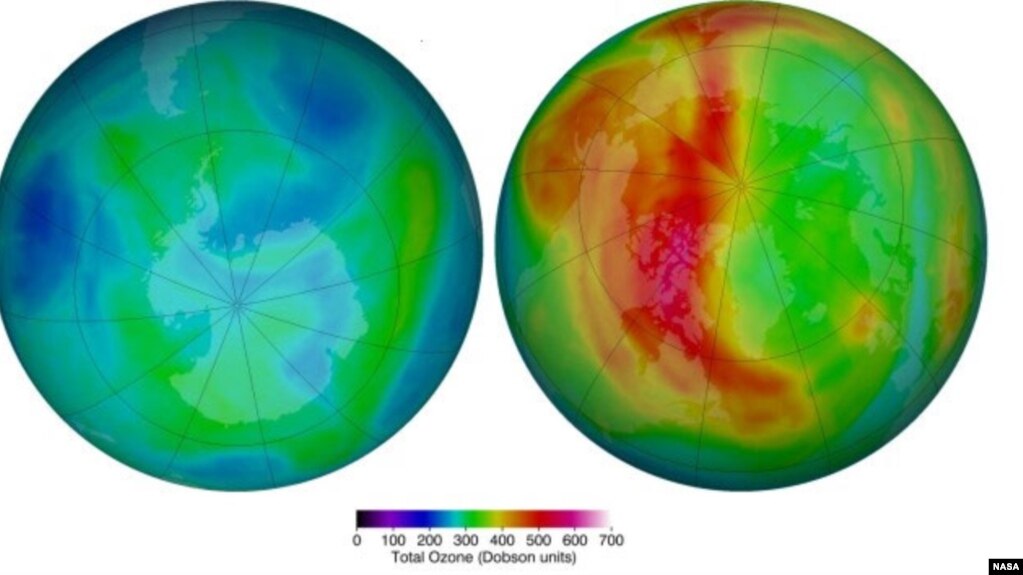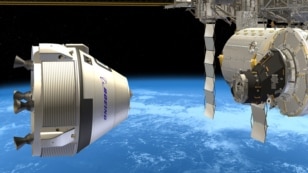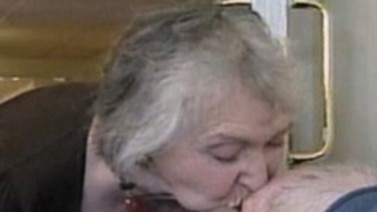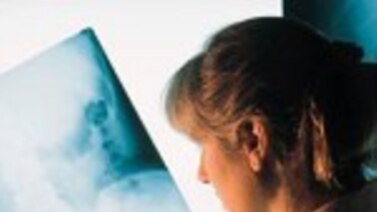
The new report says the Earth’s ozone layer is showing signs of recovery. Ozone is a form of oxygen. It is found in the air we breathe and in Earth's atmosphere. The ozone layer in the upper atmosphere protects life on Earth. The ozone there blocks harmful radiation from the Sun. But near Earth, ozone is a common pollutant. It can harm people, crops and other plants.
The UN report says the ozone layer appears to be improving because of a reduction of industrial chemicals into the air.
Scientists say the improving conditions are a result of an international treaty signed in 1987. It is called the Montreal Protocol.
The Montreal Protocol was meant to end the use of or sharply reduce over 100 known ozone depleting substances. It banned ozone-depleting chemicals, including man-made chlorofluorocarbons, also known as CFCs. They were once widely used in refrigerators, spray cans, insulation foam and fire suppression products.
The report comes as good news for Geir Braathen, a scientific officer with the World Meteorological Organization. He says a lot has changed for the better since the UN agency released its last report on ozone depletion four years ago.
“Now for the first time in this report, we say that we see indications of a small increase in total ozone. So that means that recovery of the ozone layer in terms of total ozone has just started. If you go more specifically at the higher level, about 40 kilometers in the stratosphere high above the ground, there one sees a clear increase in ozone in recent years.”
Geir Braathen says this is a sign that the amount of ozone-depleting gases is decreasing and ozone levels are on the way up again. The stratospheric ozone layer is a fragile shield of gas. It protects the Earth from harmful ultraviolet radiation.
The UN Environment Program says the Montreal Protocol will prevent two million cases of skin cancer each year by 2030. Officials say it will also help prevent damage to human eyes and immune systems, which protect the body against disease.
The report finds the discontinuation of ozone-depleting substances has been good for the world climate. This is because many of these substances also are strong greenhouse gases -- pollution linked to climate change. But the report shows that some substitutes are themselves strong greenhouse gases that could harm these gains.
The WMO calls international action on the ozone layer a major environment success story. It is urging the same kind of unity to tackle the even greater issue of climate change.
I’m Caty Wever.
*This story came from reporter Lisa Schlein in Geneva. Marsha James adapted it for VOA Learning English. George Grow was the editor.
Words In This Story
deplete – v. to use up most or all of something
man-made - adj. made by people, not by nature
fragile – adj. easily broken or damaged
substitute; pl. substitutes – n. a person or thing that takes the place of someone or something else
tackle – v. to deal with (something difficult)
Now, its your turn to use these Words in this Story. In the comments section, write a sentence using one of these words and we will provide feedback on your use of vocabulary and grammar.




